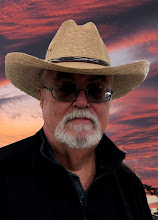Regular readers of this blog may recall that I like war movies, and I watched a lot of them on TV when I was a kid. But somehow, I never saw D-DAY, THE SIXTH OF JUNE. Now that I’ve watched it, I can kind of understand that. The title should have drawn my attention, but maybe I sensed that this film is only indirectly about D-Day and is barely a war movie at all.What it is, in fact, is a romance movie told mainly in flashback. Which is not necessarily a bad thing, so I was certainly willing to give it a try. The story opens on a ship the night of June 5, 1944, as a combined special force of American, British, and Canadian troops are headed for Normandy to carry out a commando raid in the hope of knocking out a big gun overlooking the beaches where the regular troops will land a few hours later. Commanding the force is a British officer played by Richard Todd. One of the American officers is played by Robert Taylor. And there’s a connection between them because, you see, they’re both in love with the same girl they met, at separate times, a couple of years earlier in London. Cue the flashbacks.
The movie spends a lot more time on the relationship between Taylor and Dana Wynter, who plays the young English woman, than it does on Wynter’s romance with Todd. We also get a couple of subplots about Wynter’s father, a brigadier general who was wounded at Dunkirk but wants to get back into action, and Taylor’s commanding officer, who’s also gung-ho to the point of recklessness because he wants a promotion. Wynter’s father is played by the great British character actor John Williams, and Taylor’s commanding officer is played by the always top-notch Edmond O’Brien.
After a lot of well-done romance and British homefront scenes, we finally shift back to Todd, Taylor, and the rest of the commandos landing and going after the German gun emplacement, and for ten or fifteen minutes, D-DAY, THE SIXTH OF JUNE actually is a war movie, and decently done, too, although the filming is staged on a very small scale so we can’t see how few people are actually involved. This isn’t a cast of thousands, by any means. But it’s an exciting and satisfying battle.
Followed by a terrible and unsatisfying ending. No spoilers here, but I didn’t like it.
The movie looks good, in a mid-Fifties, major studio way, and the cast is also a good one. That said, I’ve never been a big fan of Robert Taylor. He’s one of the most dour-looking leading men I’ve ever seen. That works okay when he’s playing, say, a world-weary gunfighter in a Western, but it’s hard to like him in this move. It doesn’t help that he’s playing a character who’s basically a heel all the way through. I like Richard Todd and he’s plenty stalwart when he has to do something, which isn’t often enough. And Dana Wynter, good grief, she was a beautiful woman! And she turns in a decent performance, too, in a role where it would be easy to be too overwrought. The supporting cast features Jerry Paris in a fairly meaty role, and if you look quick, you can spot Dabbs Greer and Parley Baer, too.
It's probably a good thing I never tried to watch this when I was a kid. All the smooching and violin music would have had me switching the channel or heading outside to play. Watching it now, I thought D-DAY, THE SIXTH OF JUNE was a somewhat okay movie for what it is, but for war movie fans, it’s probably best for completists.














